
SYRIA 2011

Sunrise over Damascus.
^ ^^^
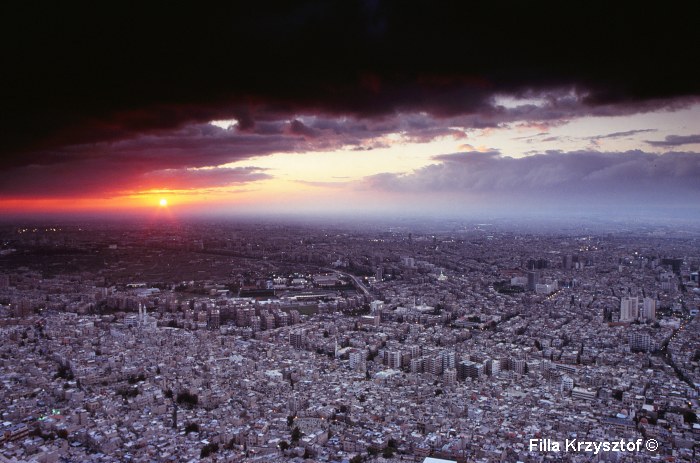
Sunrise over Damascus.
^ ^^^

The Umayyad Mosque, also known as the Great Mosque of Damascus.
^ ^^^
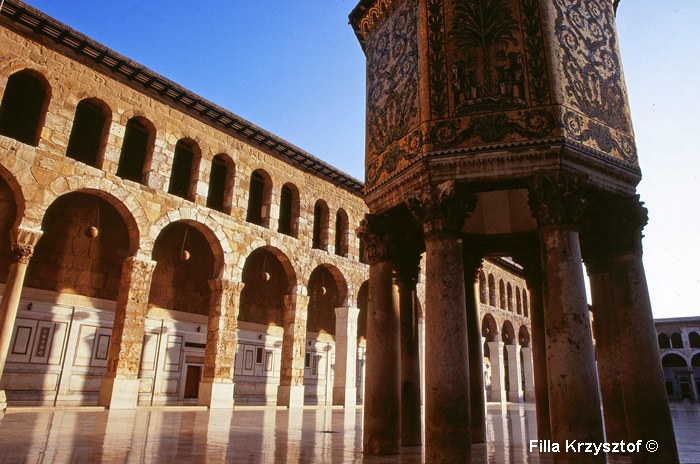
The main courtyard of Umayyad Mosque in Damascus.
^ ^^^

The shrine of John the Baptist also known as Yahya in the Muslim world.
^ ^^^

^ ^^^

^ ^^^
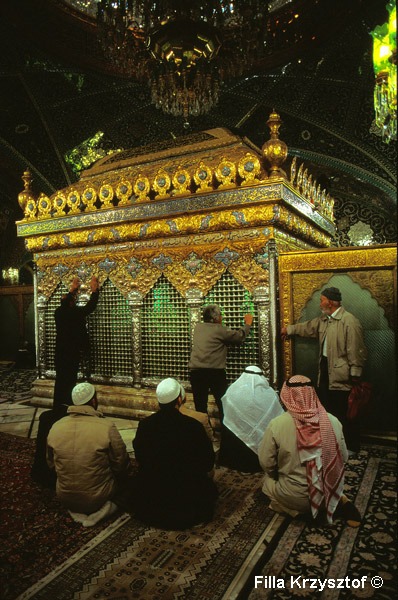
^ ^^^

^ ^^^
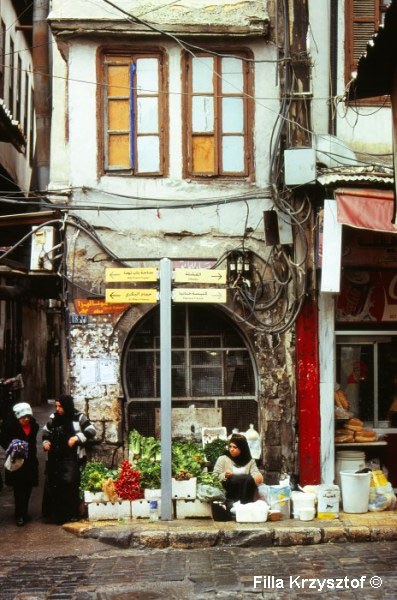
A vegetable vendor in the street of Damascus.
^ ^^^
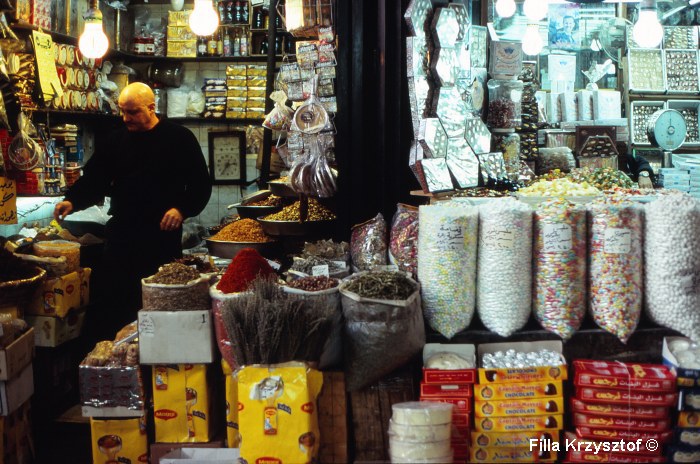
^ ^^^
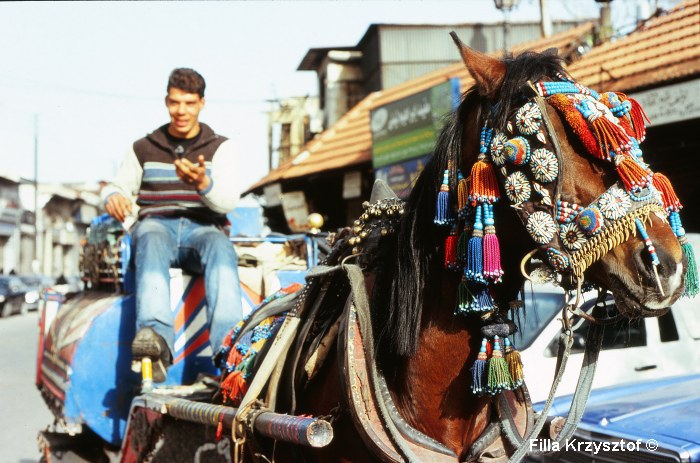
^ ^^^

Headstones.
^ ^^^
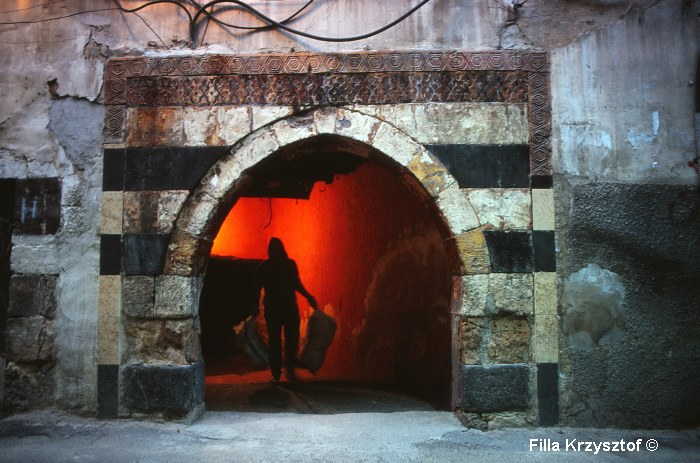
Damascus.
^ ^^^
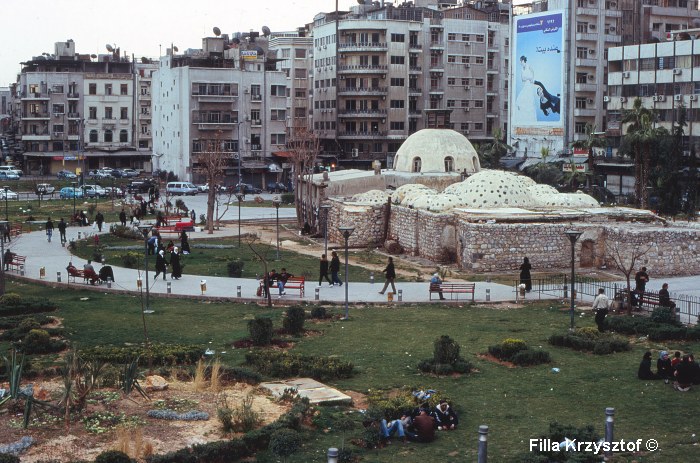
A historical baths in the centre of Damascus.
^ ^^^
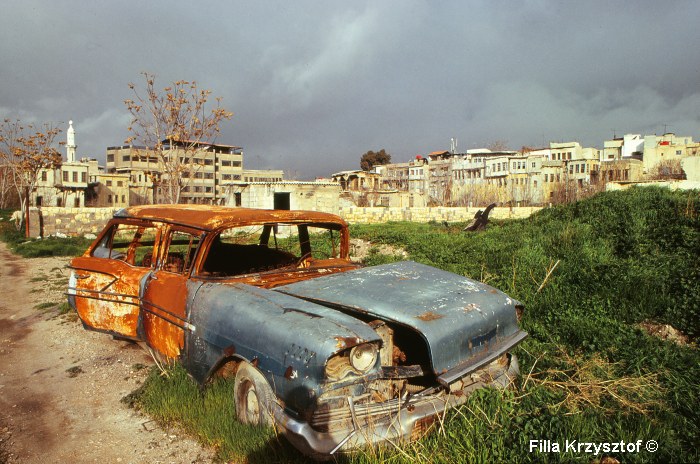
Damascus.
^ ^^^
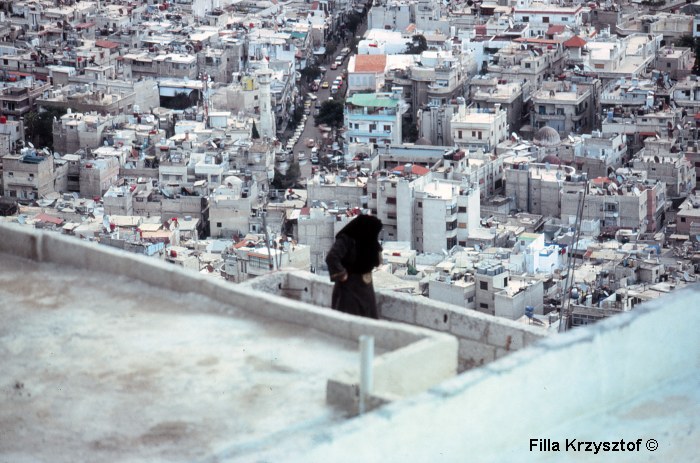
Damascus.
^ ^^^
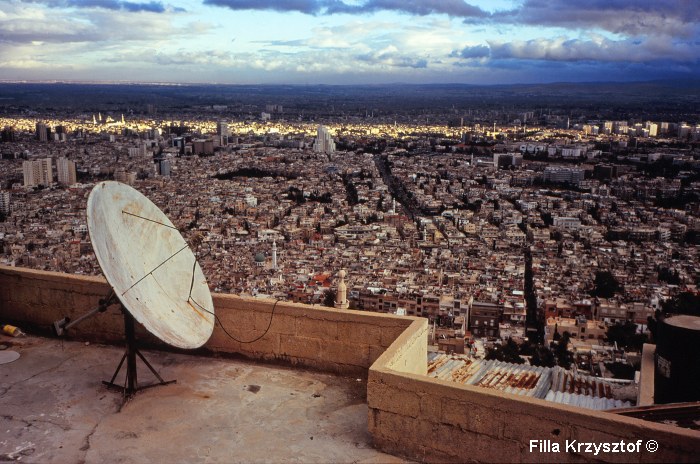
Damascus.
^ ^^^
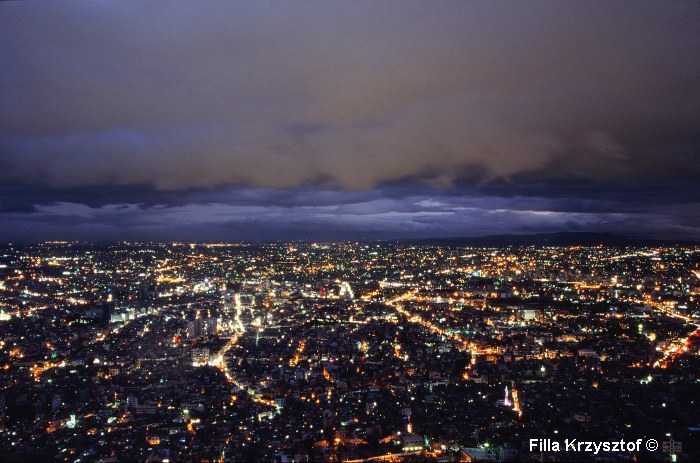
Damascus.
^ ^^^
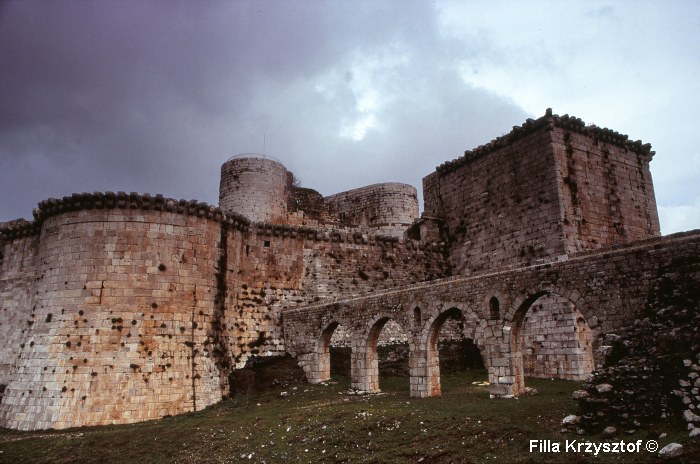
Krak des Chevaliers.
^ ^^^
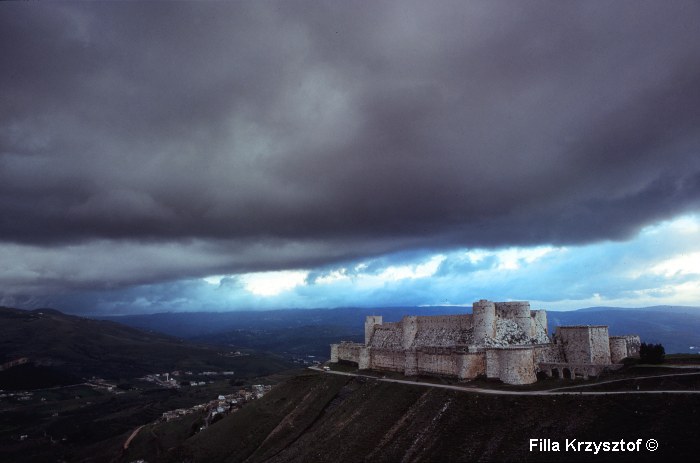
This fortress was built during the 11th century Crusade.
^ ^^^

^ ^^^
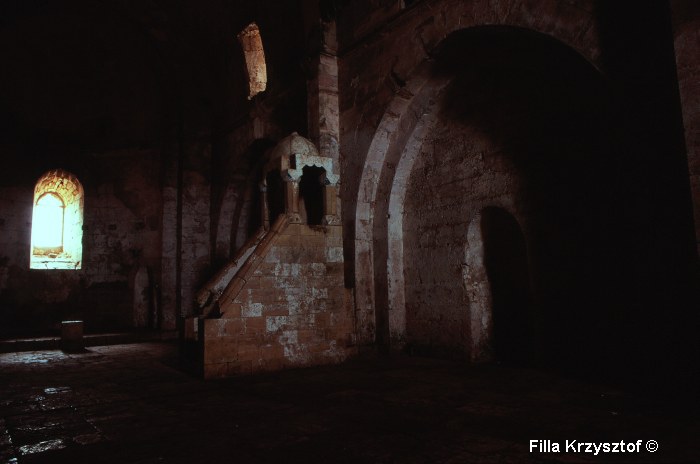
^ ^^^

Salah al-Din castle.
^ ^^^
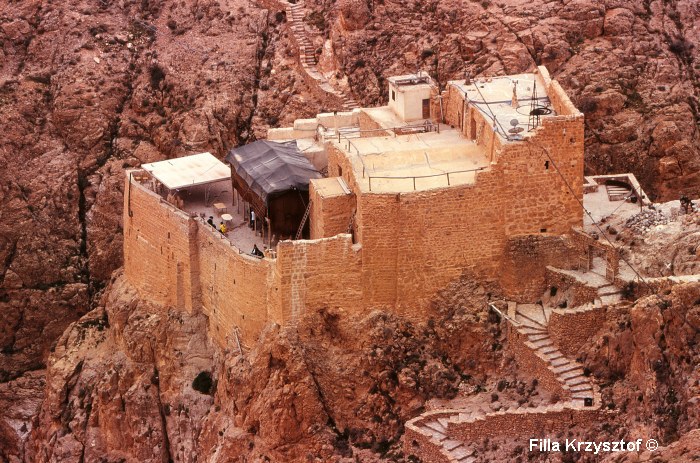
Monastery Mar Musa from 6th century was rebuilt on foundations of a Roman castle.
^ ^^^
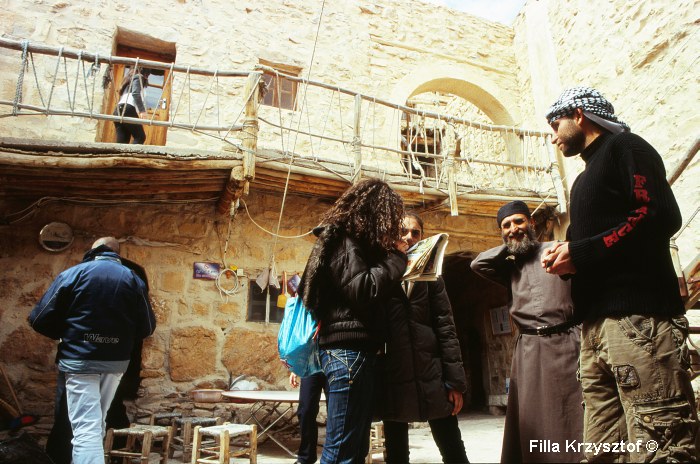
The community of monks receive pilgrims with meal and accommodation.
^ ^^^
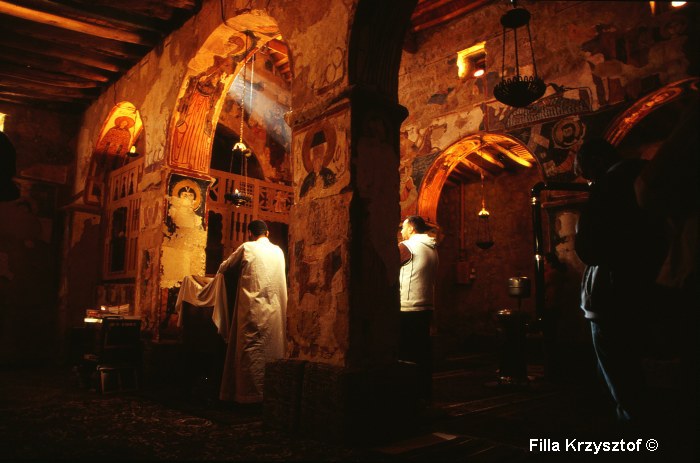
Morning prayer in the chapel of the monastery Mar Musa.
^ ^^^
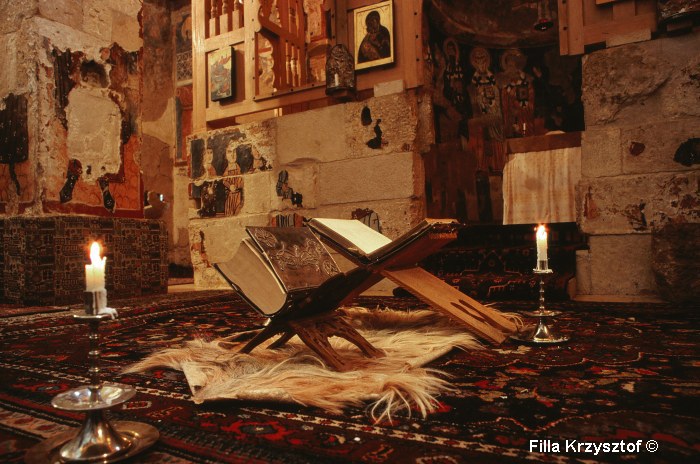
^ ^^^
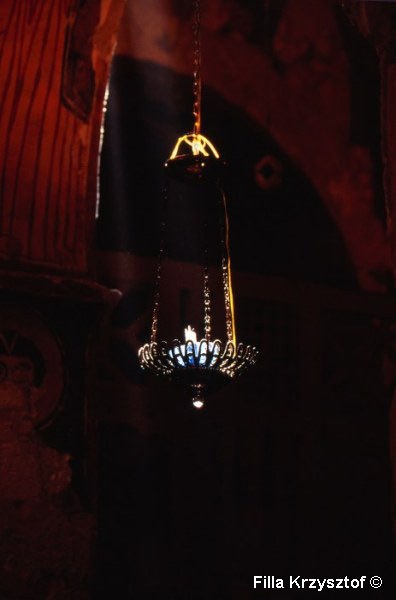
^ ^^^
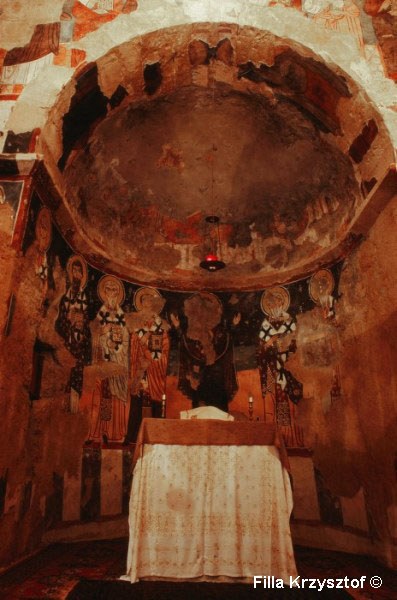
^ ^^^
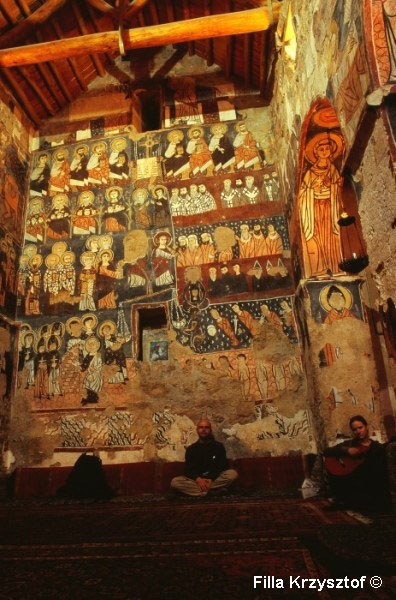
^ ^^^
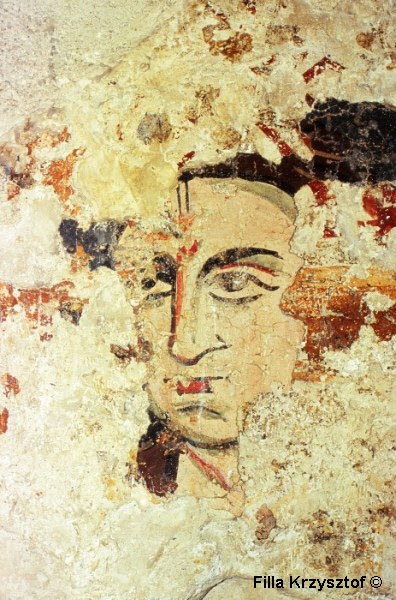
^ ^^^
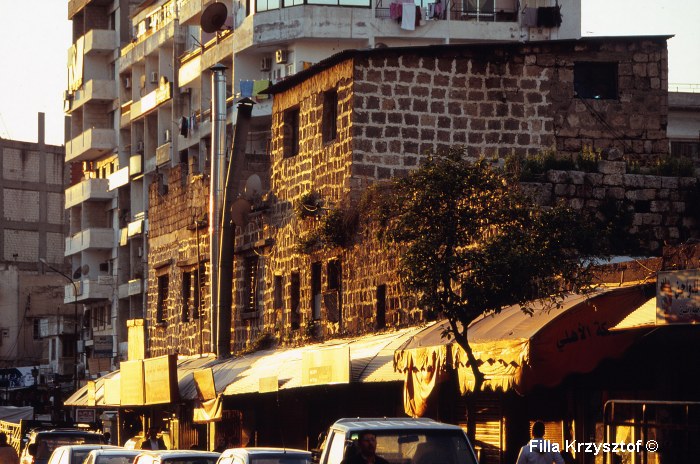
Latakia is a 3th largest city in Syria. An important port city by the Mediterranean Sea.
^ ^^^
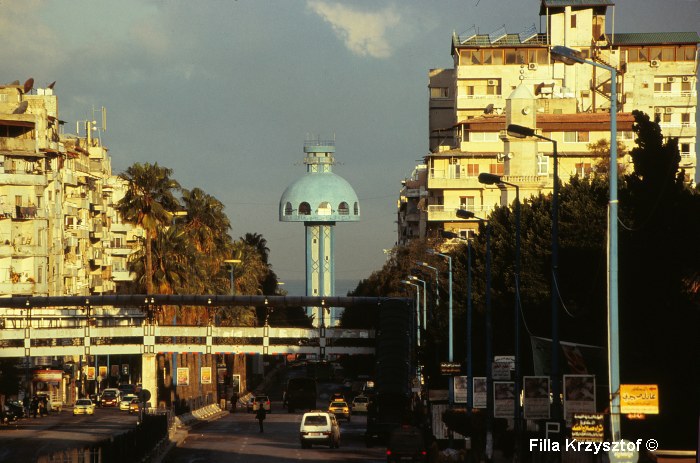
Latakia.
^ ^^^
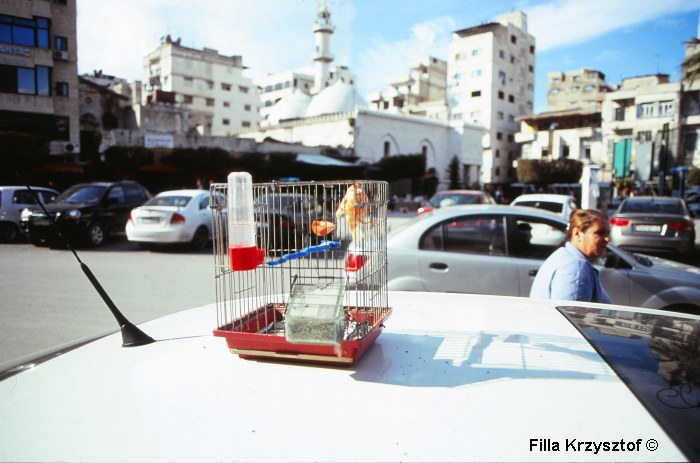
Syrians like the singing of birds, for there are many cages with birds along streets not always well protected against scorching sun.
^ ^^^
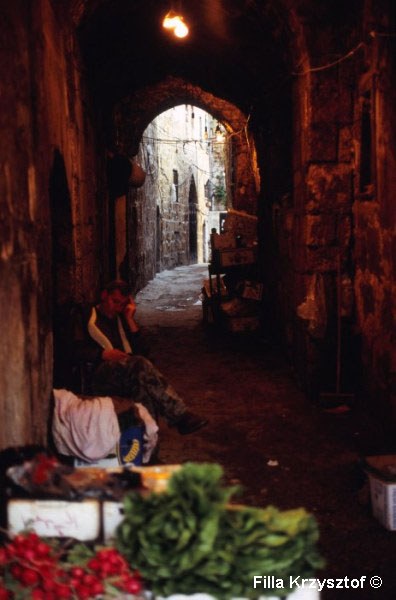
^ ^^^
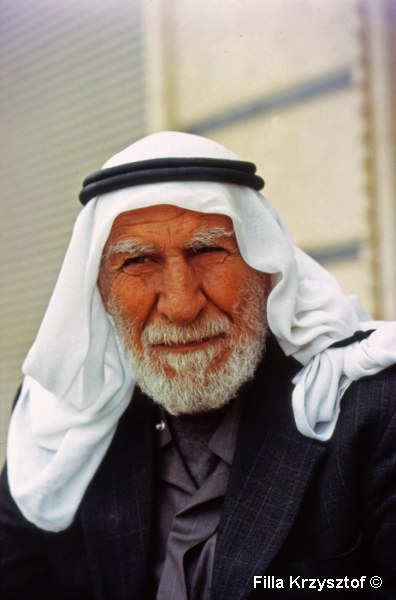
^ ^^^
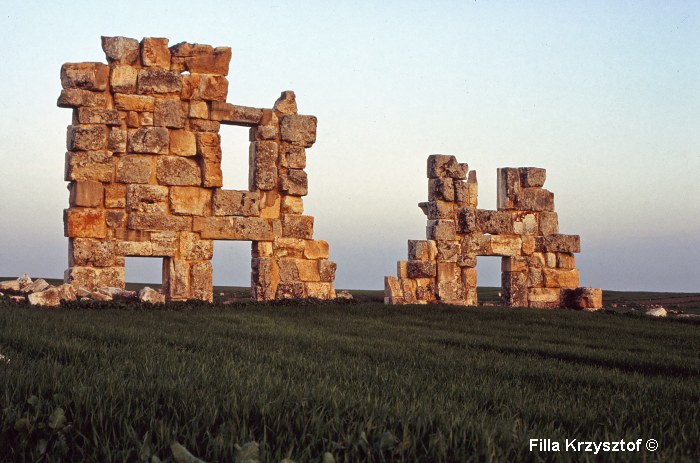
Ruins of the ancient city of Apamea first built by Greeks in 3th BC.
^ ^^^
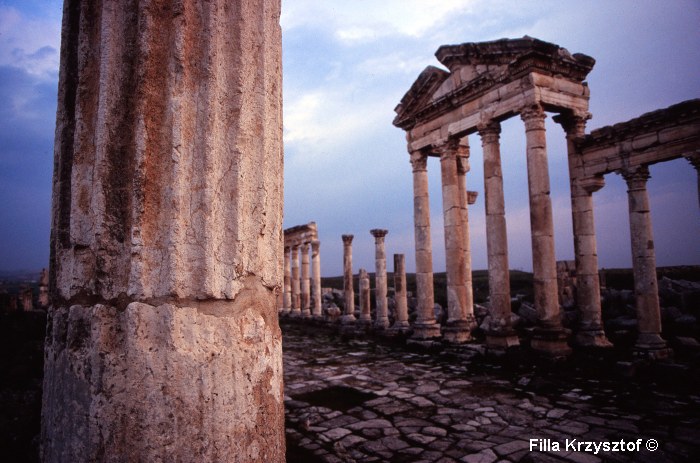
In 64 BC. The city was conquered by the Romans.
^ ^^^
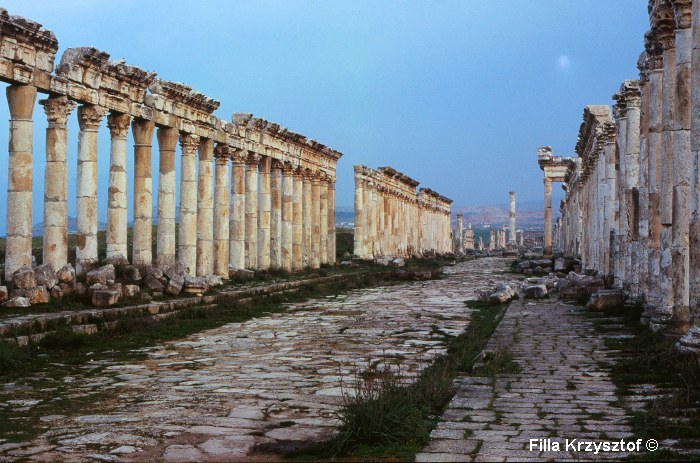
Apamea.
^ ^^^
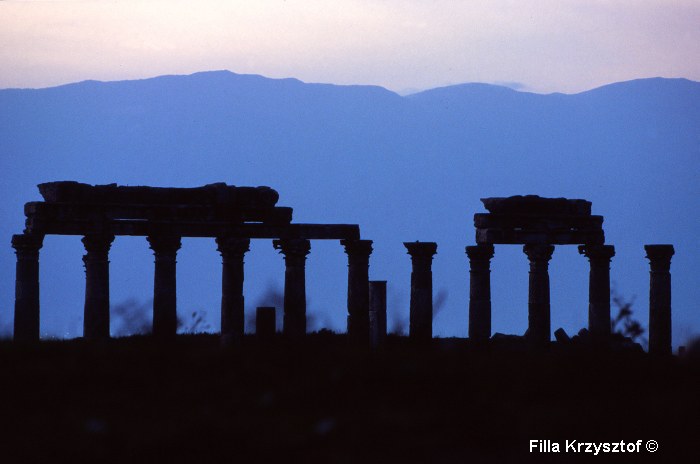
Apamea.
^ ^^^
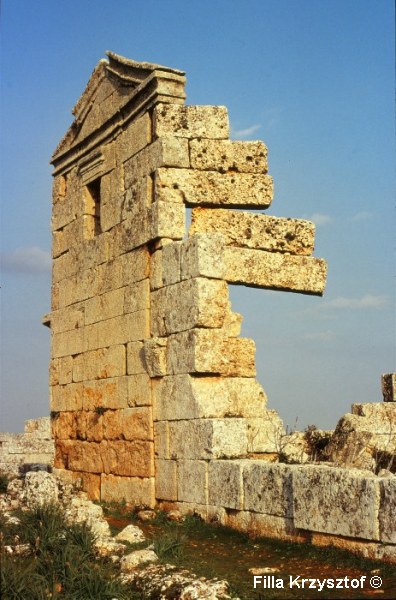
A ruined building from one of a settlements called "dead cities" which dates back to 5th century.
^ ^^^
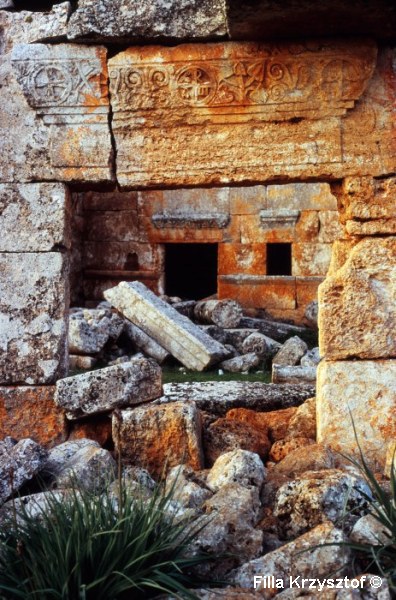
The cities were inhabited mainly by Christians, therefore many emblems and house decorations show Christian architecture.
^ ^^^
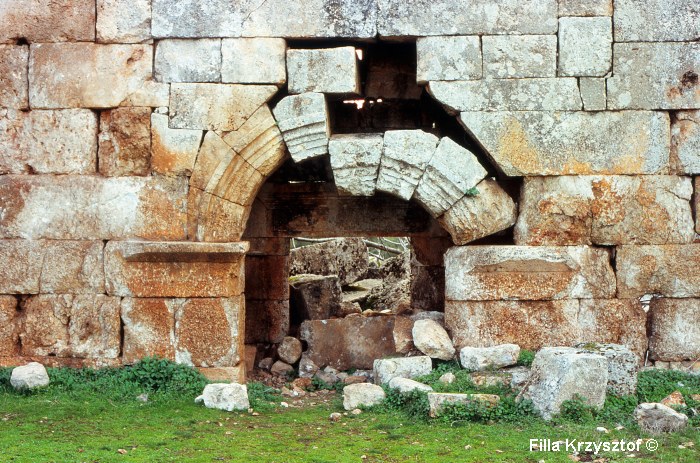
^ ^^^
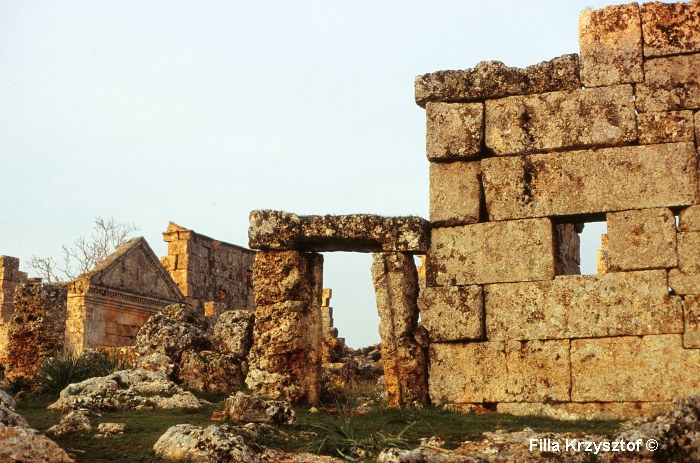
^ ^^^
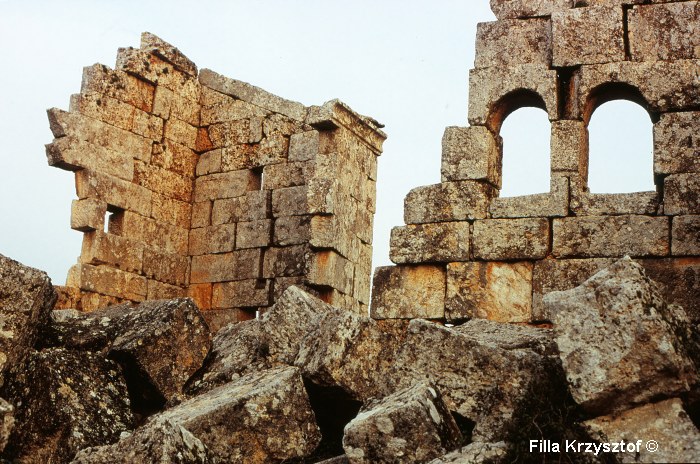
^ ^^^
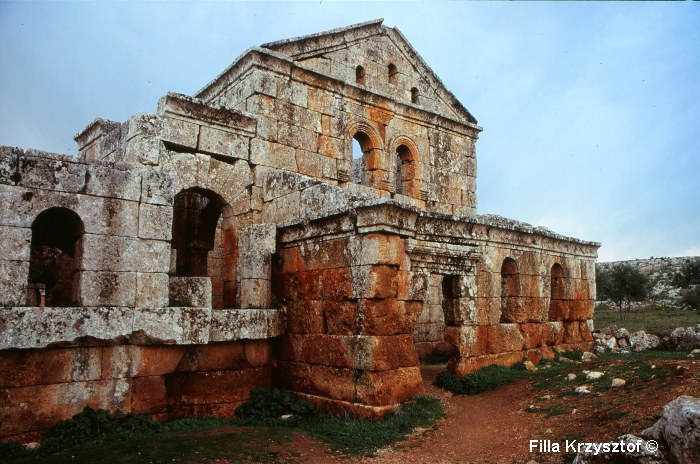
^ ^^^
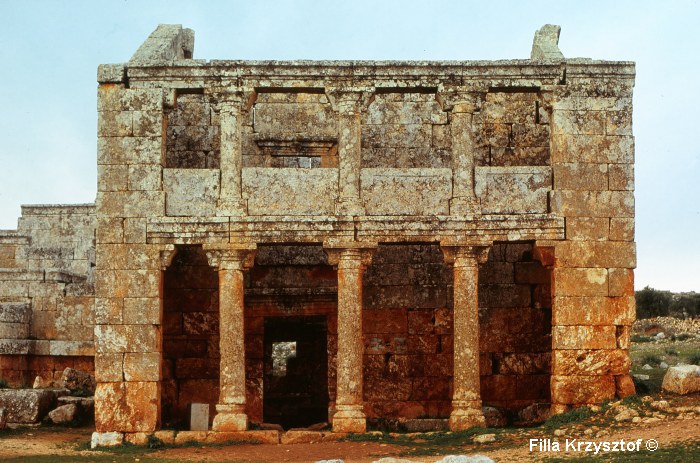
^ ^^^
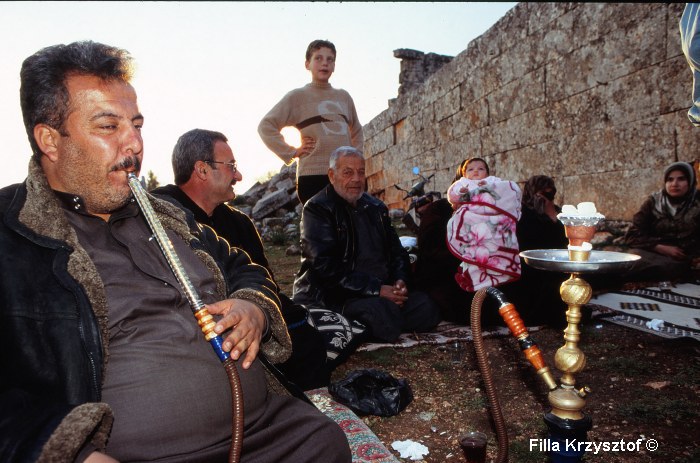
In Islam, Friday is the day off from school and work and the ruins draw entire families together for picnics and leisure.
^ ^^^
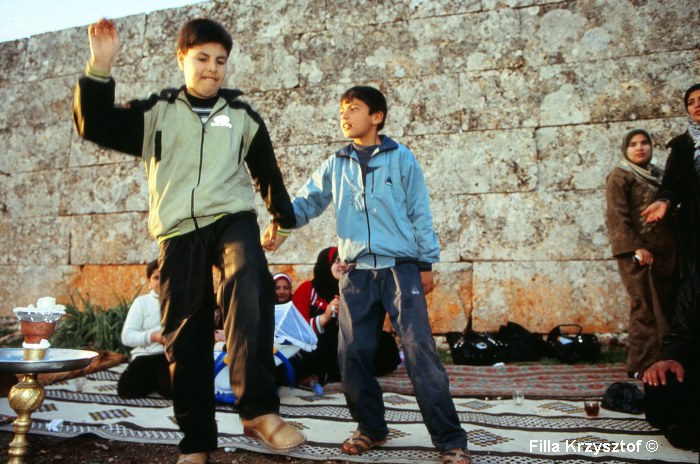
^ ^^^
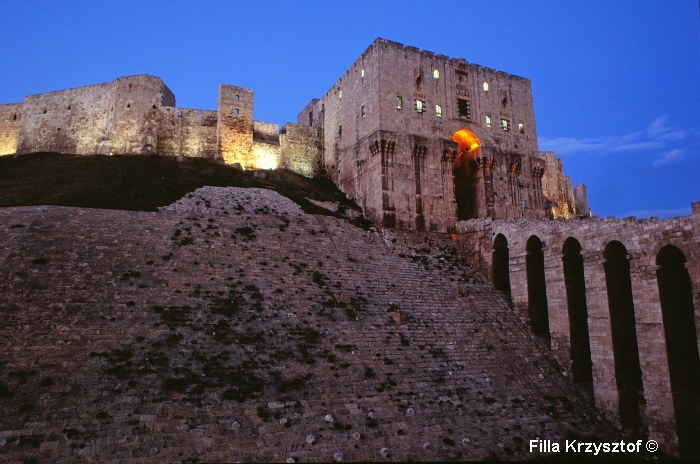
The citadel of Aleppo.
^ ^^^

Ibrahim Hanano's mosque.
^ ^^^
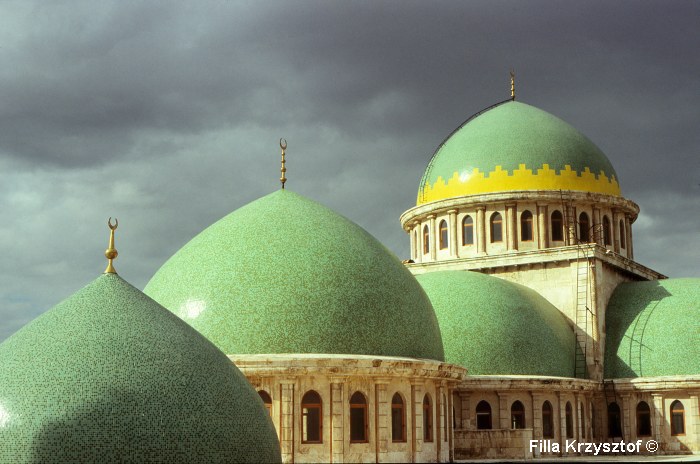
Aleppo.
^ ^^^

Aleppo.
^ ^^^
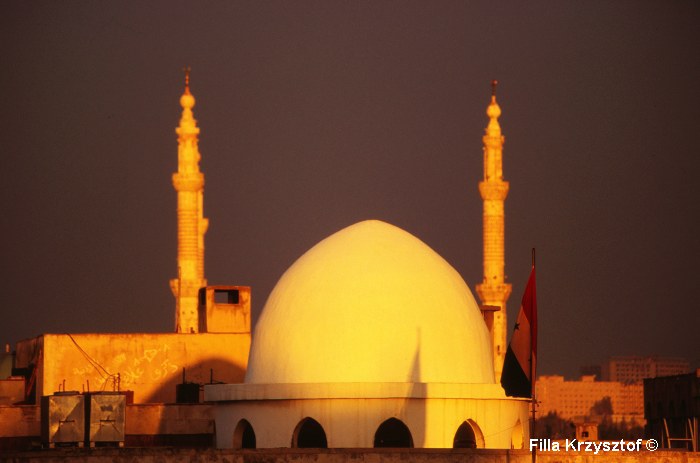
Aleppo.
^ ^^^
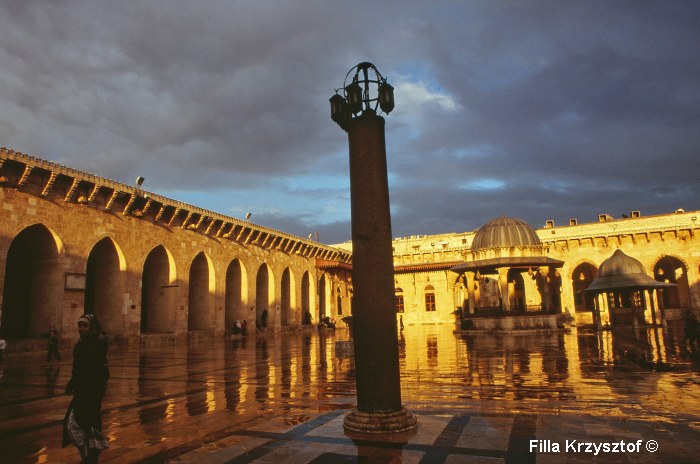
The Great Mosque of Aleppo is just 10 year younger sibling of the Umayyad Mosque in Damascus.
^ ^^^

This 45 meter minaret built in 1092 year is the only remaining original part of the mosque as the mosque was destroyed and rebuild countess times.
^ ^^^
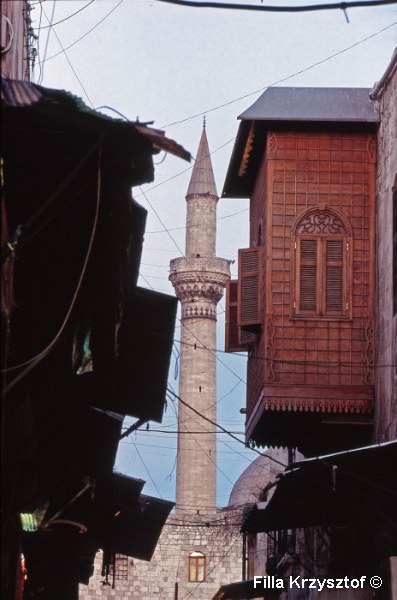
Aleppo.
^ ^^^
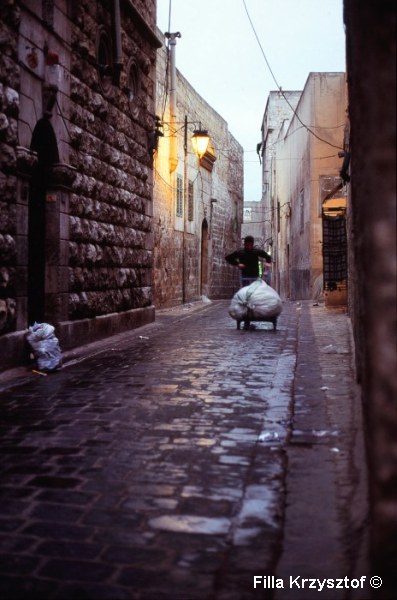
Aleppo.
^ ^^^

Aleppo.
^ ^^^
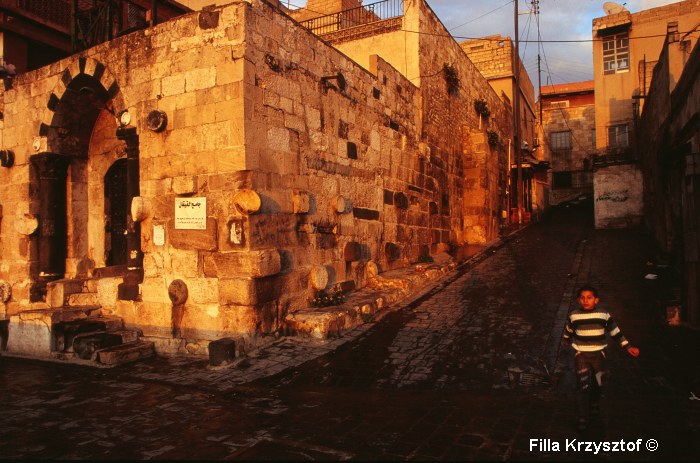
Aleppo.
^ ^^^

Aleppo. The sign of Kabba on the wall of the house indicates that the householders have undergone the holly pilgrimage to Mecca.
^ ^^^

Aleppo.
^ ^^^
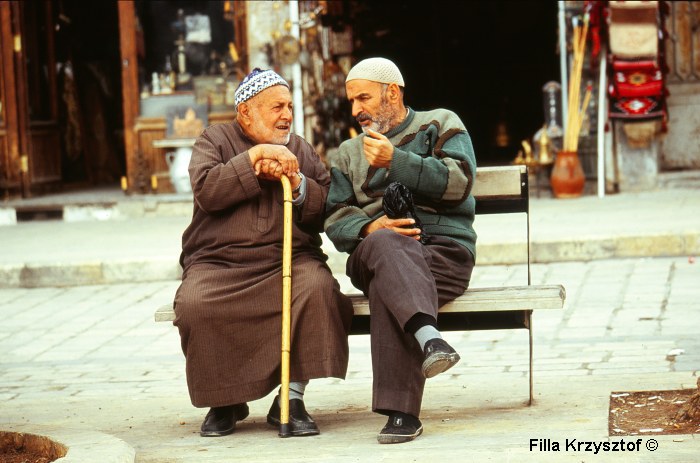
^ ^^^
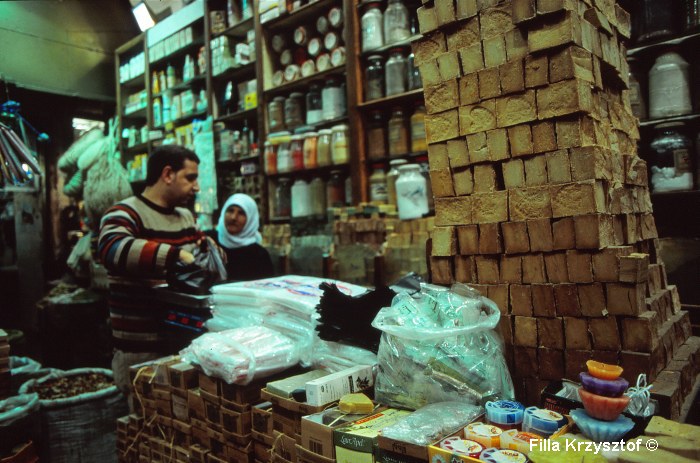
Aleppo is known among various things but one of them is a unique soap made of olive and laurel oil. The soap is sold in many shops for kilograms.
^ ^^^

Zatar - a blend of spices popular in the middle east.
^ ^^^

Pita - a type of round flat bread. Almost every morning Syrian bakeries are besieged by locals to obtain the common commodity.
^ ^^^
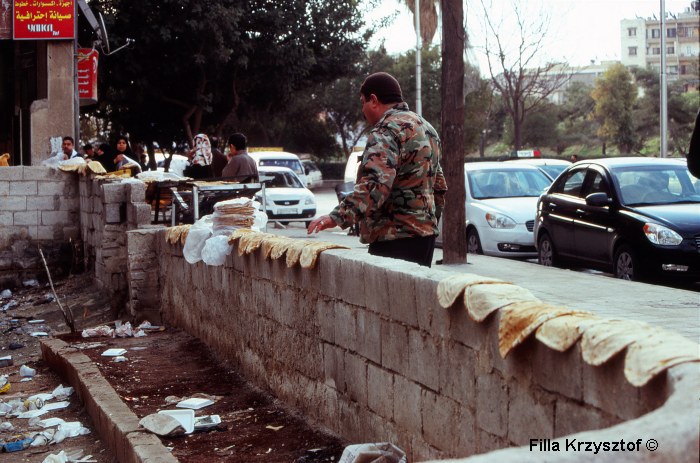
Still hot bread is spread out to cool it down and eliminate any excess of humidity.
^ ^^^
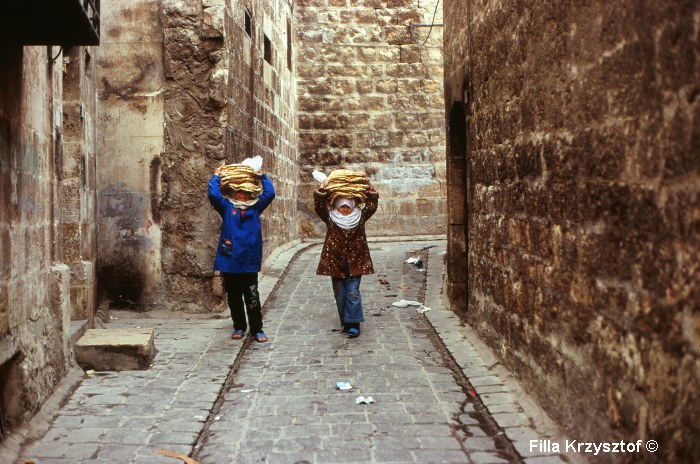
Aleppo. On the way from a bakery.
^ ^^^

Aleppo. On the way from a bakery.
^ ^^^
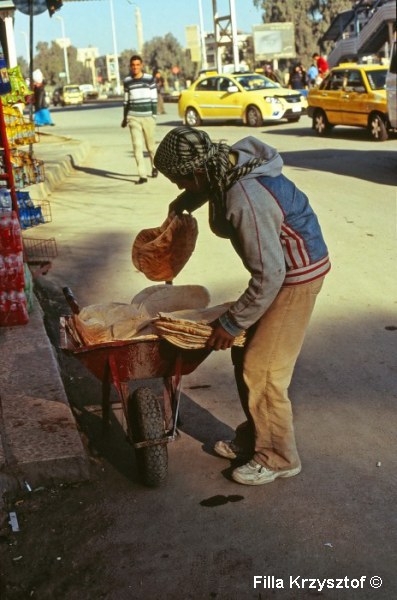
Aleppo. On the way from a bakery.
^ ^^^
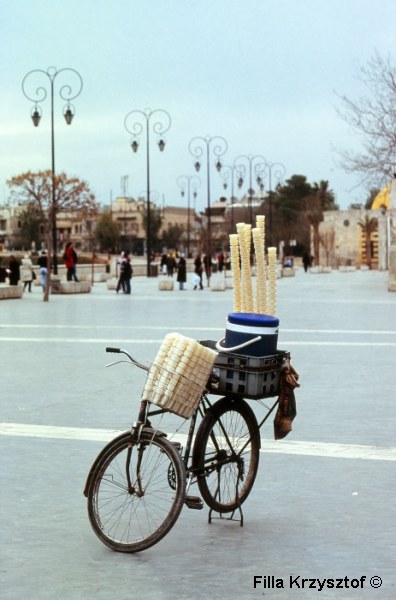
Aleppo.
^ ^^^
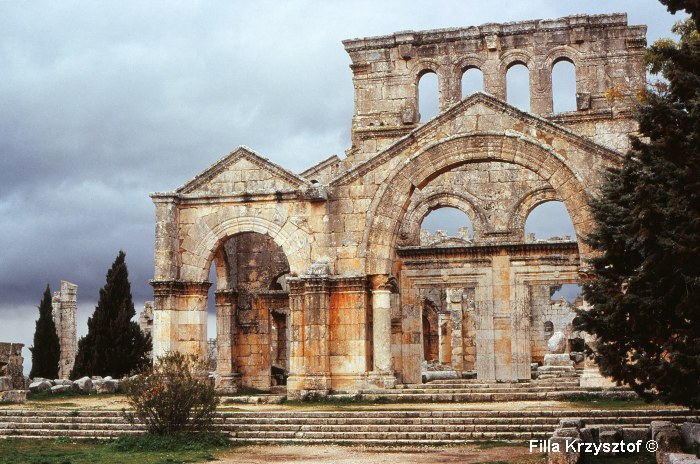
The Church of Saint Simeon Stylites from 5th century.
^ ^^^
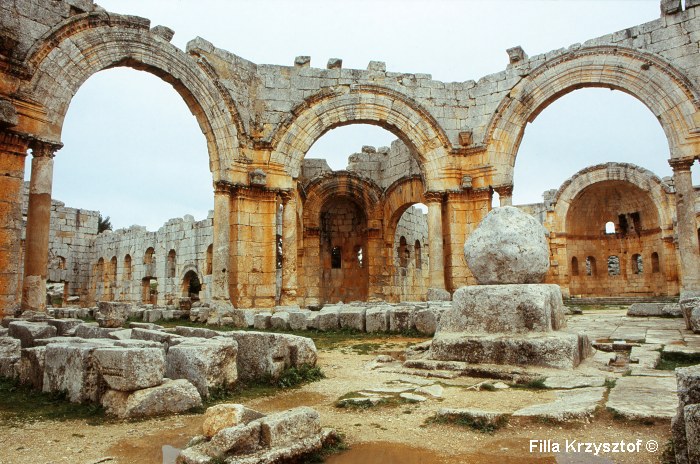
The boulder on pedestal it is all that remains after once 18 m. high column on which Saint Simon was sitting.
^ ^^^
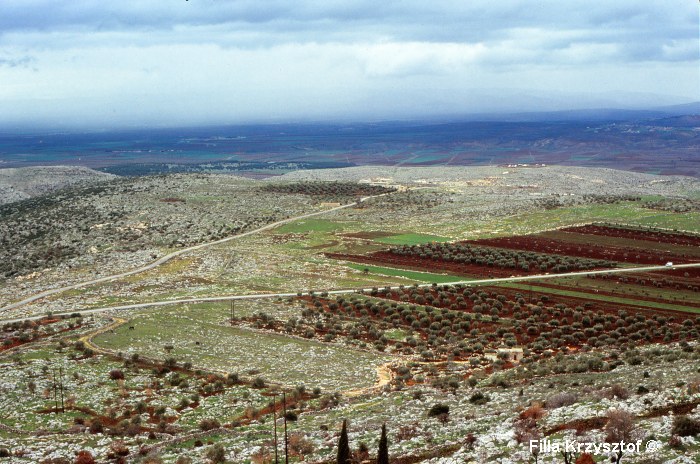
^ ^^^
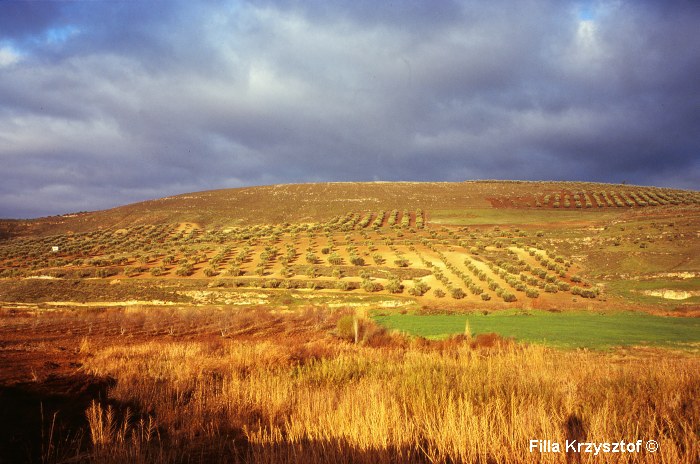
^ ^^^

Ruins of a temple dedicated to the goddess Ishtar in Ain Dara.
^ ^^^
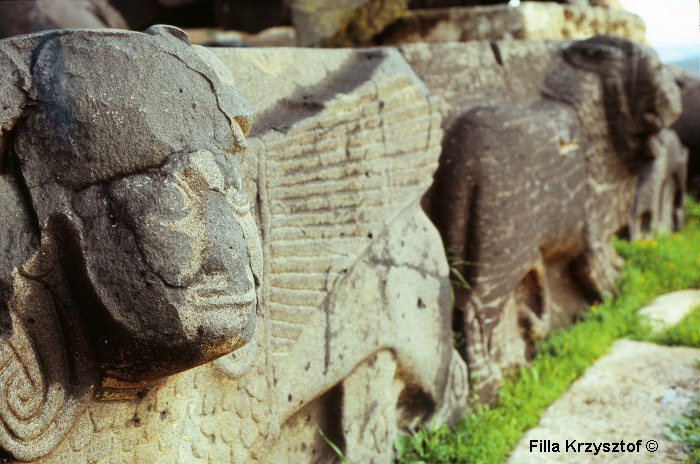
The Hittite temple was flourishing between 1300 and 740 y. BC.
^ ^^^
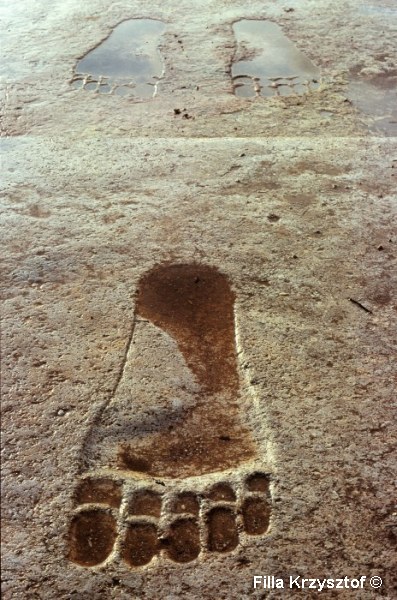
The 91 cm long foot prints on the threshold of the temple may symbolize the entrance of the goddess to the temple.
^ ^^^
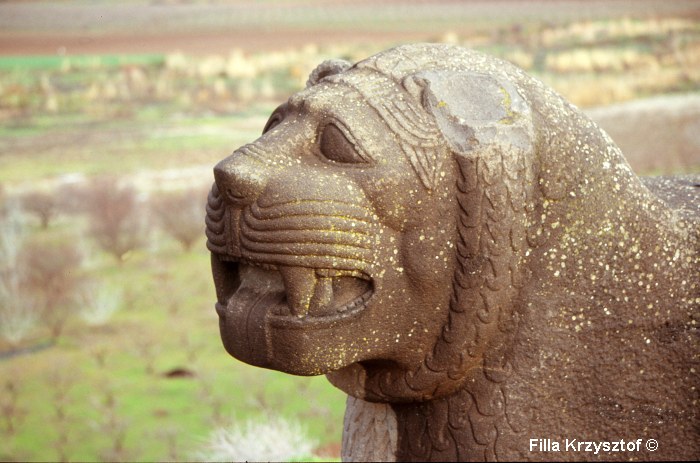
^ ^^^
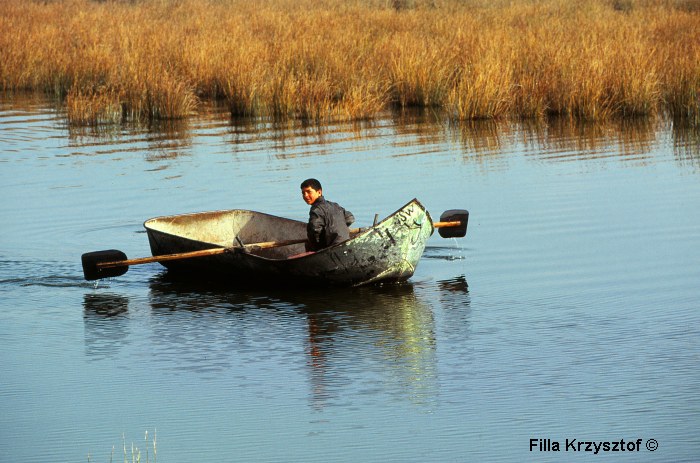
The salt lake Jabbul.
^ ^^^

The salt lake Jabbul.
^ ^^^
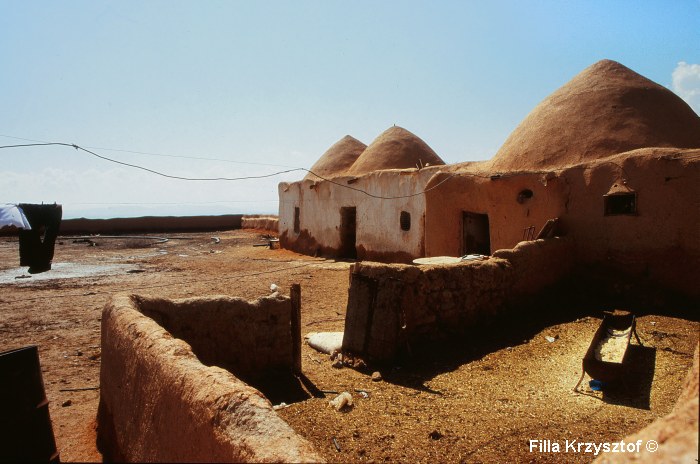
^ ^^^
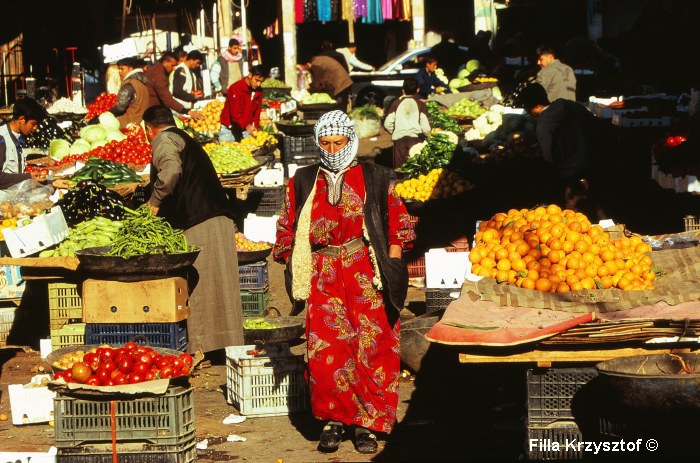
^ ^^^
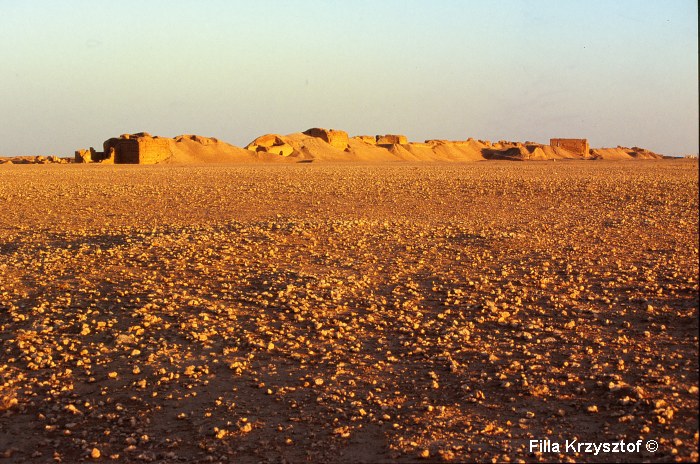
An ancient city Dura Europos by the bank of Euphrates.
^ ^^^
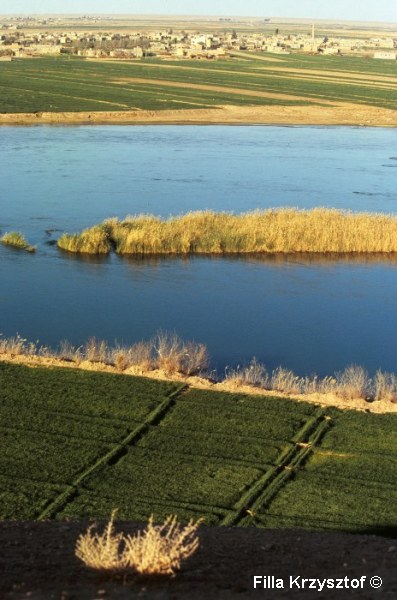
Euphrates.
^ ^^^
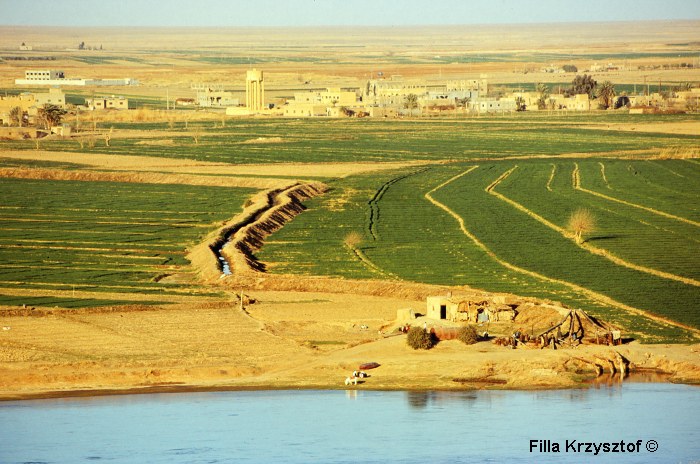
An irrigation system on the bank of Euphrates river.
^ ^^^
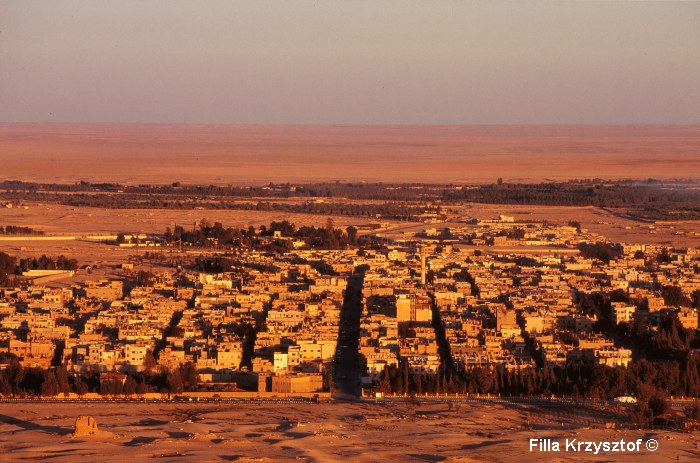
The town Tadmur better known under its Greek counterpart Palmyra.
^ ^^^

The ruins of Palmyra.
^ ^^^
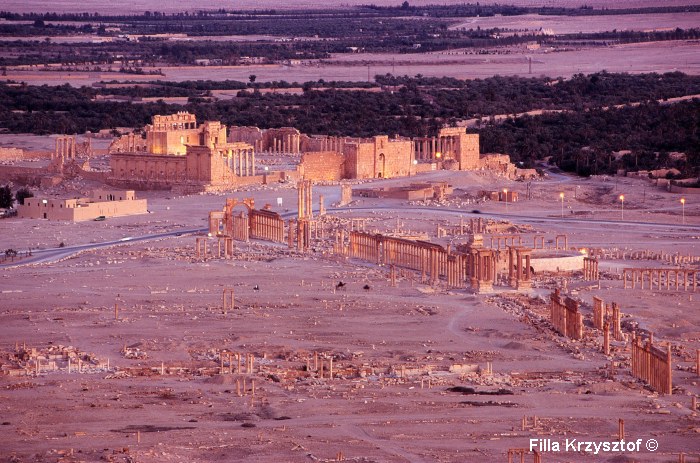
^ ^^^
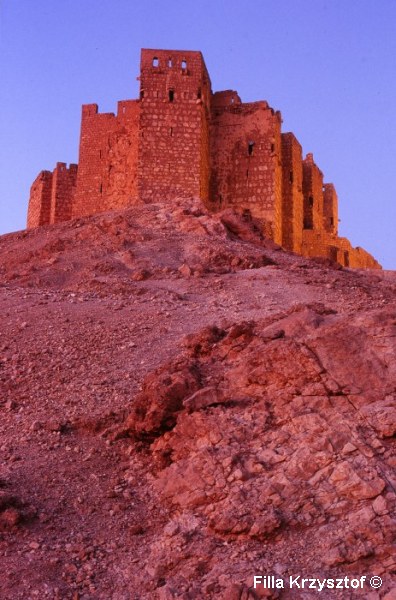
On the mount towering over the ruins there is an Arab castle from c17th (Qal'at Ibn Maan).
^ ^^^
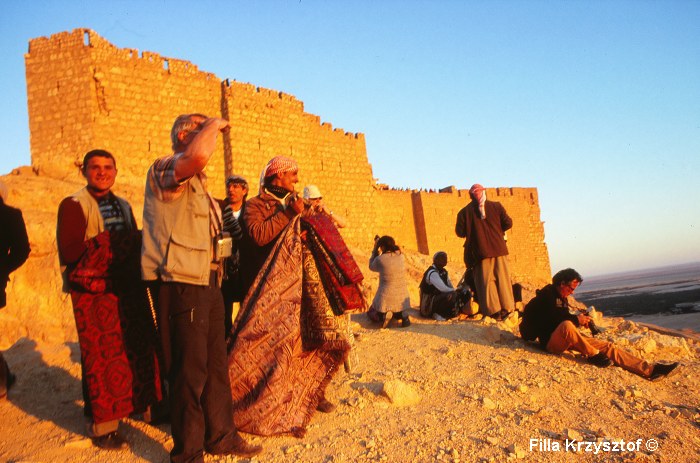
Before the castle was surrounded by a moat but now it is surrounded by tourist and touts.
^ ^^^
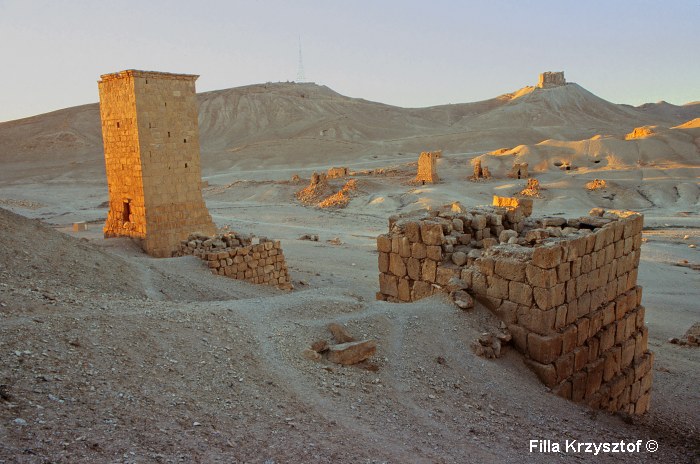
The valley of the tombs in Palmyra.
^ ^^^
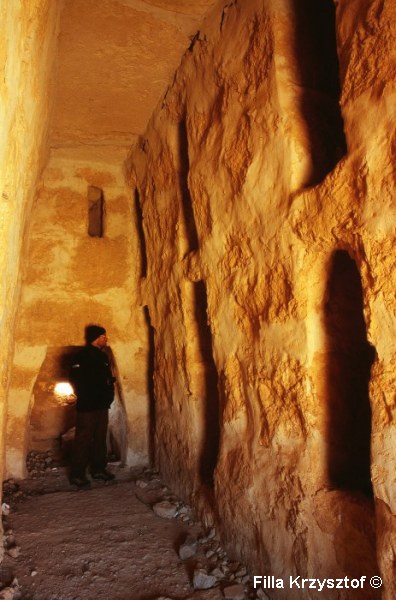
A tomb is a few story building with square base. On each floor there are several compartments for laying coffins.
^ ^^^

^ ^^^
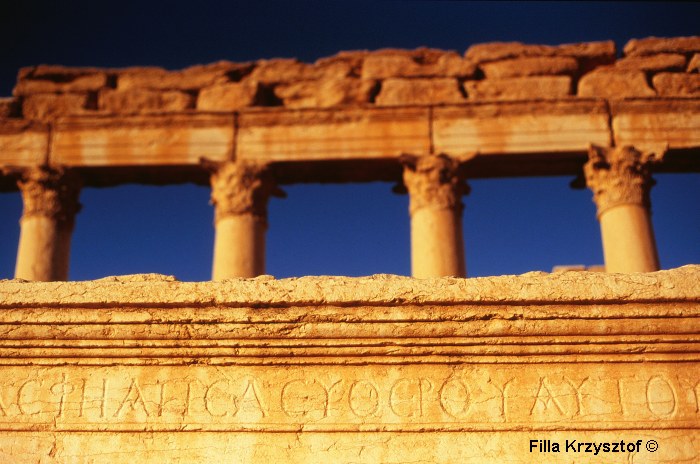
^ ^^^
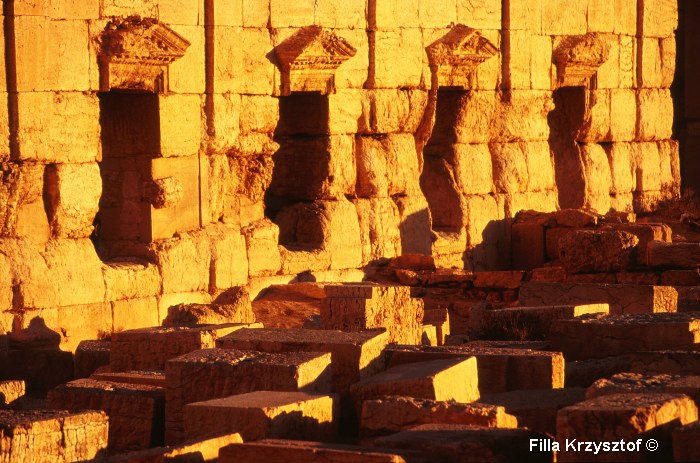
^ ^^^

The Great Tetrapylon.
^ ^^^

Tetrapylon in Greek means four gates or four columns. In Palmyra it is situated on the main crossways.
^ ^^^
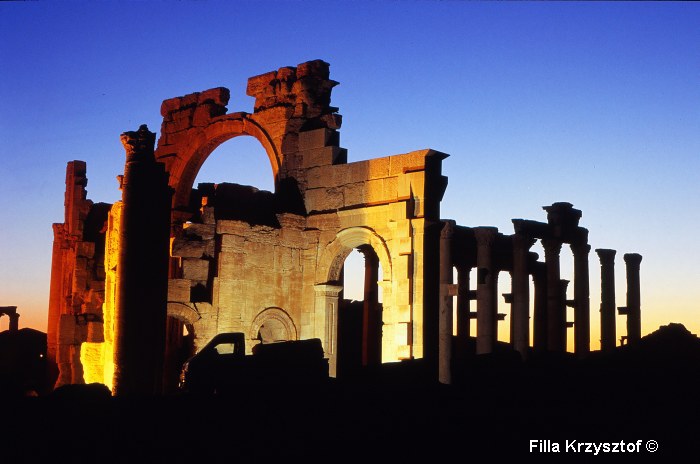
A triumphal arch.
^ ^^^
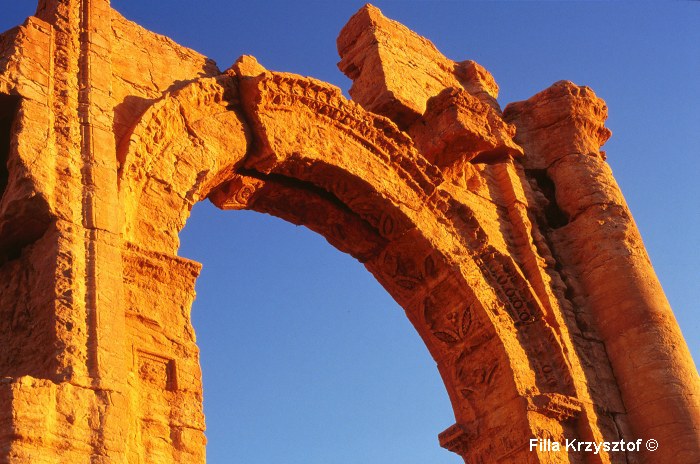
^ ^^^
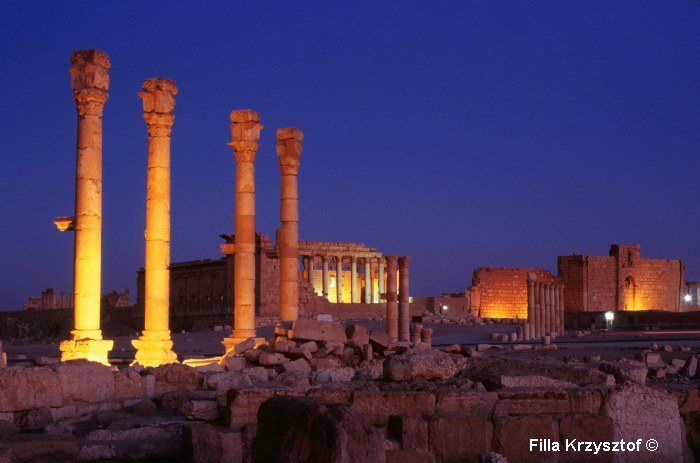
^ ^^^

^ ^^^

^ ^^^
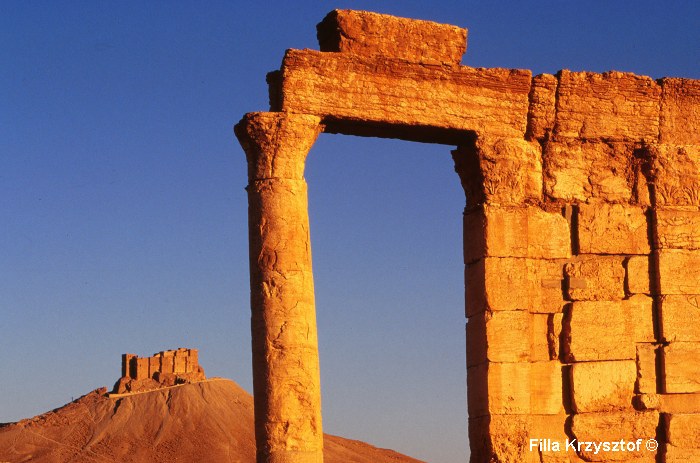
^ ^^^

In Palmyra as in many other archaeological sits in Syria, excavations are a common site.
^ ^^^

^ ^^^
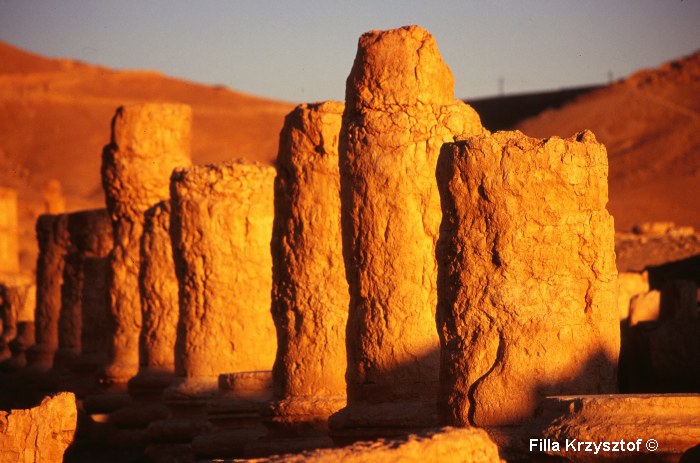
^ ^^^
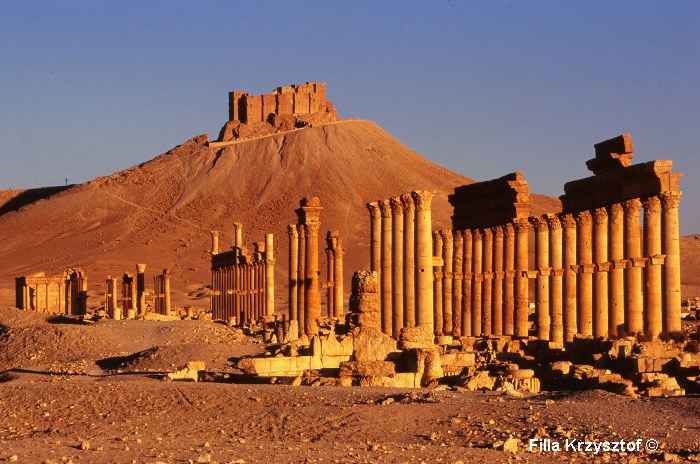
^ ^^^
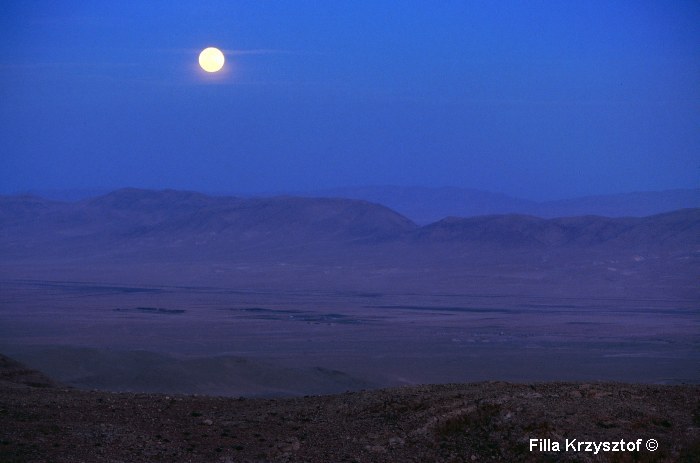
^ ^^^
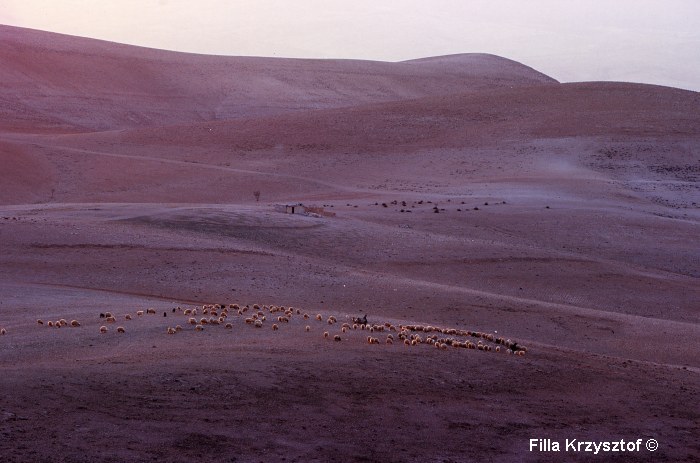
^ ^^^
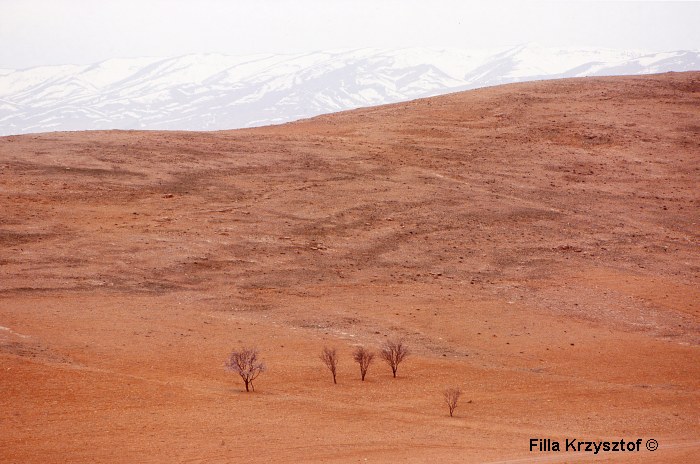
^ ^^^


















































































































